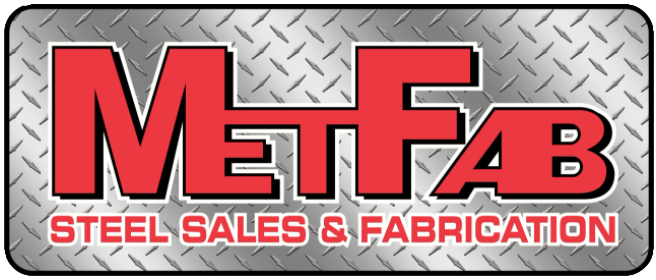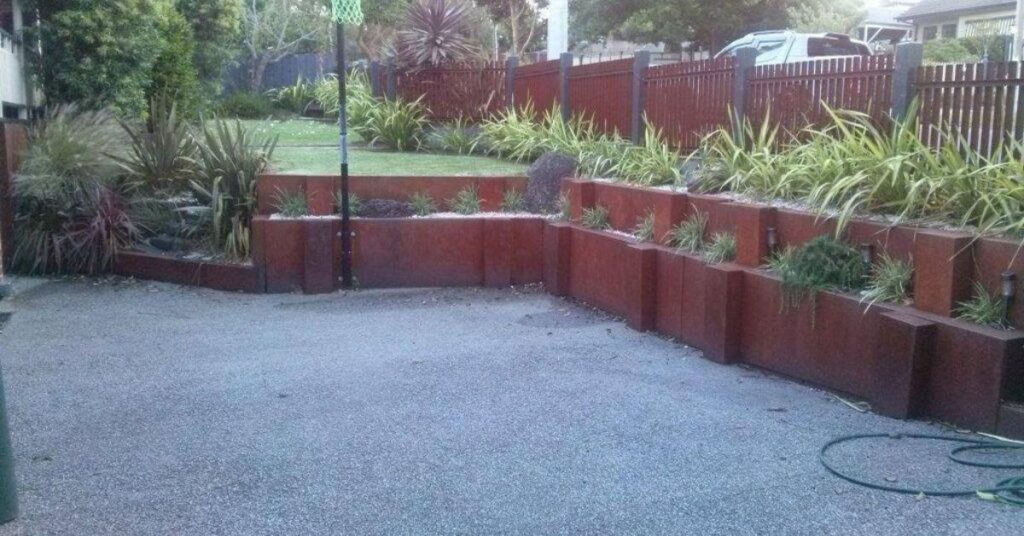How Long Does Corten Garden Edging Last?
If you're working on your garden or landscaping, you've probably heard about Corten steel edging. This material has become a favourite among homeowners, gardeners, and landscapers for its durability and rustic, industrial look.
One of the biggest questions people ask before choosing it is, how long does Corten garden edging last? After years of working with Corten steel in the field—cutting, welding, and installing it in various garden projects—I can confidently say that this material can outlast almost anything else. In this article, I'll walk you through its typical lifespan, factors that affect its durability, and how you can keep it in top shape for decades.
What is Corten Steel?
Corten steel, also known as weathering steel, is a type of steel that intentionally rusts to form a protective layer on its surface. Unlike regular steel, which rusts through and weakens over time, the rust on Corten creates a stable barrier that prevents further corrosion. This gives Corten its signature reddish-brown patina and makes it highly resistant to the elements.
I've worked with Corten Steel on many projects over the years. From garden beds to fire pits and retaining walls, it's a versatile material that looks better the longer it sits outdoors. When you first install it, it is plain, metallic grey. But over the next few months, it starts developing that deep, rusted look, which many homeowners love because it gives the garden a more natural, earthy feel.
In addition to looking great, the patina ensures that your edging won't need the same upkeep as other materials like painted metal or wood. And once it's installed, you can pretty much leave it alone to do its thing.
How Long Does Corten Garden Edging Last?
When properly installed and maintained, Corten steel edging can last 50 to 100 years. That's a huge advantage if you want a long-lasting garden design that will be around for a while. From what I've seen on job sites, Corten edging holds up better than most other materials, including wood, plastic, or even galvanized steel. Some of the Corten installations I've revisited after 10 or 15 years show only minor changes—just a richer, darker patina, but no significant damage.
Corten steel lasts so long because its patina acts like a shield. While regular steel continues to rust until it weakens and crumbles, Corten's outer layer of rust forms a barrier, preventing further corrosion from reaching the metal's core.
What Affects the Longevity of Corten Edging?
Although Corten steel is incredibly durable, there are a few factors that can impact how long your garden edging will last. Based on my experience working on various landscaping projects, here are the main things to consider:
Climate and Environment
Corten edging works best in dry or temperate climates, where the steel gets wet occasionally but has time to dry in between. I've seen it perform beautifully in areas with mild winters and summers. However, in wet or coastal areas, the steel may corrode faster than usual because it stays wet for longer. Salt from the ocean can also accelerate rusting, even with the protective patina.
Field Tip: In coastal projects, I recommend applying a clear protective sealant to the Corten edging to slow down the corrosion process. This would only be necessary for some installation, but it can make a difference if your garden is near the beach.
Soil Conditions
The soil's pH can also influence how quickly Corten steel weathers. In acidic soils (pH below 6), the corrosion process can speed up, even though Corten is designed to withstand rusting. I've worked on a few projects where the edging weathered unevenly because of acidic soil. In these cases, adding a plastic barrier between the soil and the steel helped extend the life of the edging.
Steel Thickness
Many people overlook the thickness of the steel. I always recommend using edging that's at least 3mm thick. While thinner steel (1.6mm or 2mm) may look good initially, it's more prone to warping or wearing down over time. Thicker steel costs more upfront, but it will save you the trouble of having to replace it down the line. In my experience, thicker edging stands up better to heavy rainfall, frost, and physical impacts from lawnmowers or gardening tools.
Water Exposure
If your garden edging is regularly exposed to water—like from sprinkler systems or hoses—it may rust more quickly than expected. I've had clients call me a few years after installation, surprised that the edging had eroded faster than they thought. Nine times out of ten, it turned out to be due to a nearby sprinkler head that soaked the steel every day.
Installation Tip: When placing Corten edging near irrigation systems, adjust the sprinkler heads to avoid directly hitting the metal.

How to Maximize the Lifespan of Corten Garden Edging
While Corten steel is designed to be low-maintenance, a few small steps can help you get even more years out of it. Here's what I've learned over the years from working with it in the field:
Let the Patina Develop Naturally
The rusted patina on Corten steel is essential for its durability. It typically takes 6 to 12 months for the patina to form fully. During this period, it's important not to interfere with the process. Some people try to speed up the rusting with chemicals, but I've found that it's better to let nature take its course. A rushed patina tends to flake off, which defeats the purpose of Corten's weathering process.
Regular Cleaning and Inspections
Although Corten doesn't require much maintenance, I recommend giving it a light scrub with a wire brush once a year to remove loose rust or dirt buildup. Brushing it will help the patina stay consistent if the steel looks uneven or has flaky rust.
Smart Installation Practices
When I install Corten edging, I always raise it slightly above the soil level. This keeps water from pooling around the base, which can cause faster corrosion. It's also a good idea to anchor the edging securely so it doesn't shift over time, especially if you're working on a sloped area.
Protective Coatings for Wet Climates
Applying a clear sealant can add an extra layer of protection to gardens in high-moisture environments. While it's not strictly necessary, it can give you peace of mind if you live in a rainy area. I've used sealants on some projects, and they help maintain the look of the patina while slowing down further rusting.
If you're considering Corten garden edging for your landscaping project, let's explore some additional aspects that might be valuable to you as a homeowner or gardener.

Understanding the Aesthetic Appeal of Corten Steel
One of the standout features of Corten steel is its unique aesthetic. The rusted look can blend beautifully with various plants and garden designs. The warm tones of the weathered steel provide a stunning contrast to vibrant flowers and greenery.
Colour Changes Over Time
As Corten steel develops its patina, the colour can change from bright orange to deep brown or even shades of grey, depending on the environmental conditions. This process can create a rich visual texture that enhances your garden's overall appeal.
Complementing Different Styles
Whether you're going for a modern minimalist look or a more rustic farmhouse vibe, Corten edging can complement various landscaping styles. I've installed it in contemporary gardens, where the clean lines of the edging frame beautifully manicured lawns, and in wildflower gardens, where it provides a structured contrast to the chaos of nature. The versatility of Corten steel is one of the reasons I recommend it to clients looking to achieve a specific aesthetic in their outdoor spaces.
Creating Dynamic Landscapes
Corten edging can also be used creatively to create curves and geometric shapes in your garden layout. Manipulating the steel into various forms allows you to create distinct planting areas, pathways, or borders that can help define your garden's character. In my experience, gardens with Corten edging often draw more attention, making them conversation starters among guests and neighbours.

Environmental Benefits of Corten Steel
In addition to its durability and aesthetic appeal, Corten steel is also an environmentally friendly option for garden edging. Here's how:
Sustainable Material
Corten steel is a recyclable material, meaning that it can be repurposed at the end of its life cycle. This reduces waste and contributes to a more sustainable gardening practice. As a metal fabricator, I appreciate the sustainability aspect of Corten, knowing that it can be melted down and reused without losing its integrity.
Natural Weathering Process
Unlike treated wood or plastic, which may leach chemicals into the soil over time, Corten steel undergoes a natural weathering process. The rust that forms on its surface doesn't harm the surrounding soil or plants, making it a safe choice for your garden.
Minimal Maintenance
Since Corten requires very little maintenance, it means less labour and fewer resources spent on upkeep. This can also translate into lower overall environmental impact, as you won't need to use paints, stains, or chemical treatments that can be harmful to the environment.
How to Choose the Right Corten Edging for Your Project
When selecting Corten edging for your garden, consider the following tips based on my experience in the field:
Determine the Thickness
As mentioned earlier, choose at least 3mm thickness for durability. It might cost more, but the investment pays off in the long run. Thicker materials are less prone to warping and damage, especially in high-traffic areas.
Select the Right Finish
Corten steel comes in various finishes, from raw to pre-weathered. If you want the patina to develop naturally, go for the raw finish. If you prefer a more immediate weathered look, opt for the pre-weathered option, but be aware that this may blend differently with the natural rusting process over time.
Consider Height and Shape
Think about how high you want your edging to be. Standard heights range from 4 to 12 inches. Taller edging can be useful for containing soil or creating raised garden beds. In comparison, shorter edging works well for subtle delineation between garden areas. Additionally, consider whether you want straight lines or curved edges, as this can dramatically affect your garden's overall look.
Is Corten Edging Worth the Investment?
Corten garden edging is well worth the investment if you're looking for a long-lasting, low-maintenance option that adds character to your landscape. Its ability to weather beautifully over time makes it one of the most unique materials you can use in a garden. Unlike wood, which can rot, or plastic, which can crack, Corten only gets better with age.
Having worked with many materials over the years, Corten Steel offers the best balance between durability, aesthetics, and functionality. It may cost more upfront, but considering that it can last 50 to 100 years, it's an investment that will pay off in the long run.
FREQUENTLY ASKED QUESTIONS
Conclusion
Corten garden edging is more than a practical solution for delineating garden beds; it's an investment in your landscape's future. Its durability, unique aesthetic, and low maintenance make it a top choice for anyone looking to enhance their outdoor space.
Corten steel edging not only stands the test of time but also brings a beautiful, rustic charm to any garden. If you want a long-lasting, eco-friendly solution that adds character to your landscape, Corten is definitely worth considering.
Whether you're a seasoned gardener or just starting, investing in Corten garden edging can elevate your landscaping project, making it a feature you'll appreciate for many years to come.


